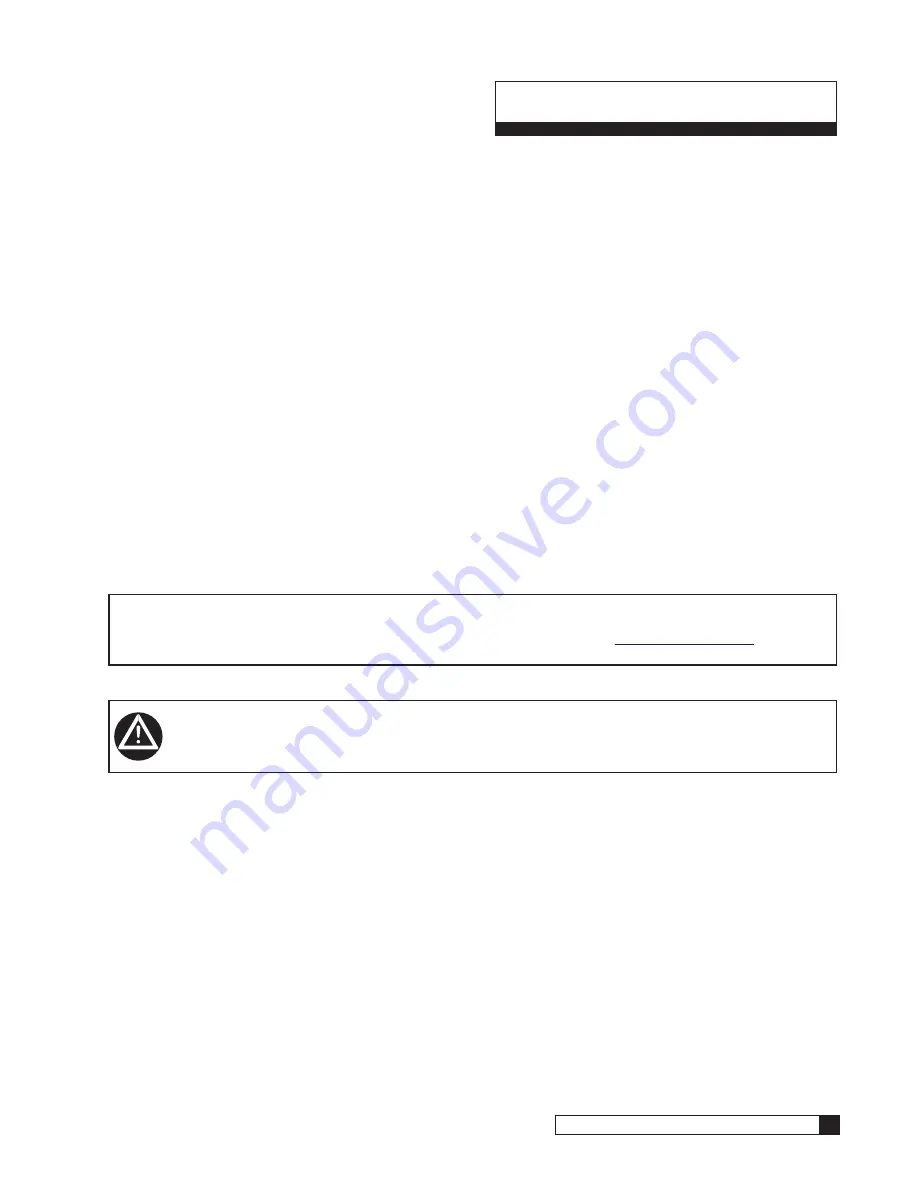
Maintenance
47
Cat. No. 01024514
Maintenance
Analyze the System
Analyzing the problem involves three basic steps:
1. Check the system in all cycle positions.
2. Compare the data to normal operating data.
3. Determine which component may cause the problem (troubleshooting).
Although it may be possible to solve a specific problem simply by changing a component, analyzing the entire system can
reveal additional problems which would otherwise require extra service calls. Changing parts is not the same as service.
Check the System
The following tools are needed to collect data:
1. Chlorine test kits
2. Thermometer
3. Pressure gauge, 0-120 psi
4. 5-gallon bucket and watch
5. Calculator
The customer can provide most data. By collecting data prior to a service call, a first guess about the cause of the
problem can be made and the need for any special parts can be determined. If the problem is as simple as lack of salt in
the brine tank, a service call may not be needed at all. A recommended system data sheet can assist the troubleshooting
process. See the GBE Programming for Commercial Softeners and Filters, except HF xN Manual (P/N 01027295) for
instructions on how to obtain a system data sheet.
NOTE Refer to the GBE Programming for Commercial Softeners and Filters, except HF xN Manual (P/N
01027295) for diagnostic procedures using the Smart (GBE) Controller. This manual can be obtained
from your local dealer, on C-Port (www.cport.culligan.com) under the
or on the
Service Tech App.
Familiarize yourself with the replacement procedures and component parts thoroughly before attempting any repair.
WARNING! Disconnect all electrical power to the unit before servicing. Bypass the unit and
relieve system pressure before attempting repair.
Depressurizing the HE 1.5 Valve and System for Service
Complete shutdown procedure is as follows:
1. Make certain that the lines you shut off are for the system you are performing service on.
a. Open bypass valve if one is available.
b. Close the inlet isolation valve.
c. Close the outlet isolation valve.
d. Close the separate source isolation valve if one is available.
2. Cycle the valve to the backwash position.
3. Disconnect electrical power to the system.
We suggest the use of “a mild cleaning solvent”. We suggest the following brands or their equivalents:
Cleaning Solvent: Simple Green --- water soluble for removing corrosion and dirt.
Dow Corning #111, silicone grease, must be used in order to maintain the unit’s NSF certifications.






























